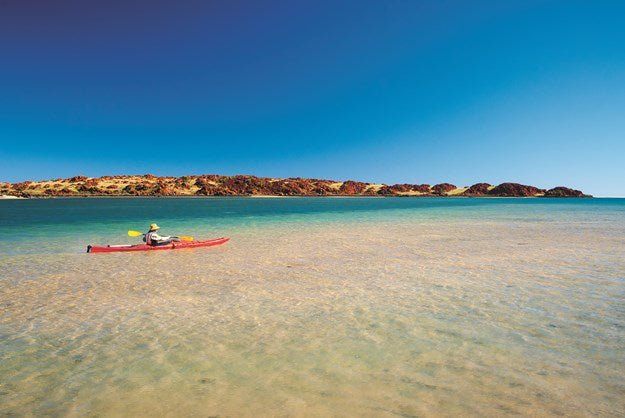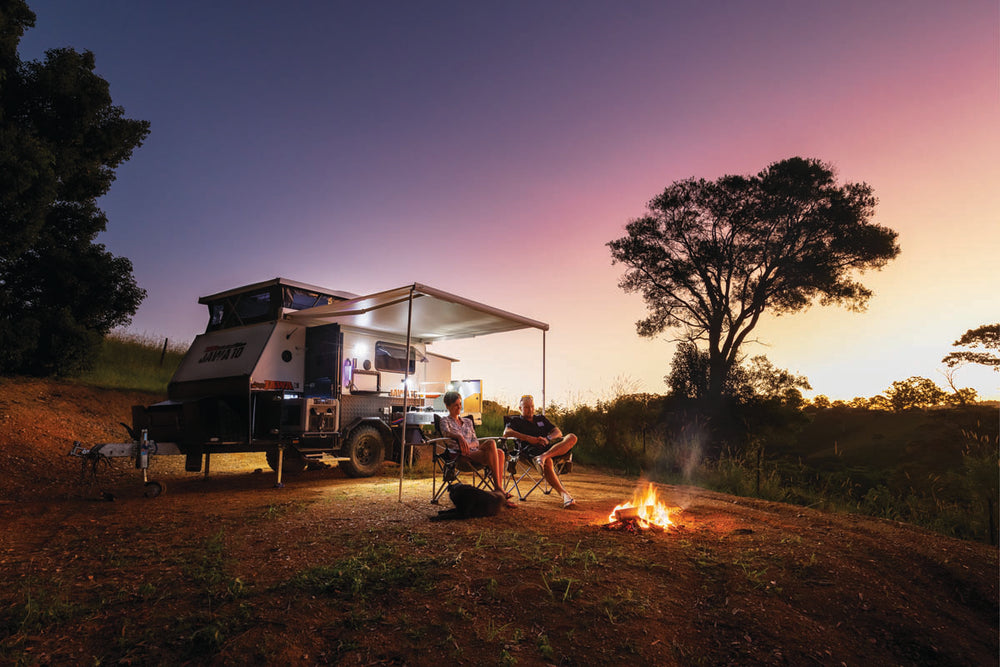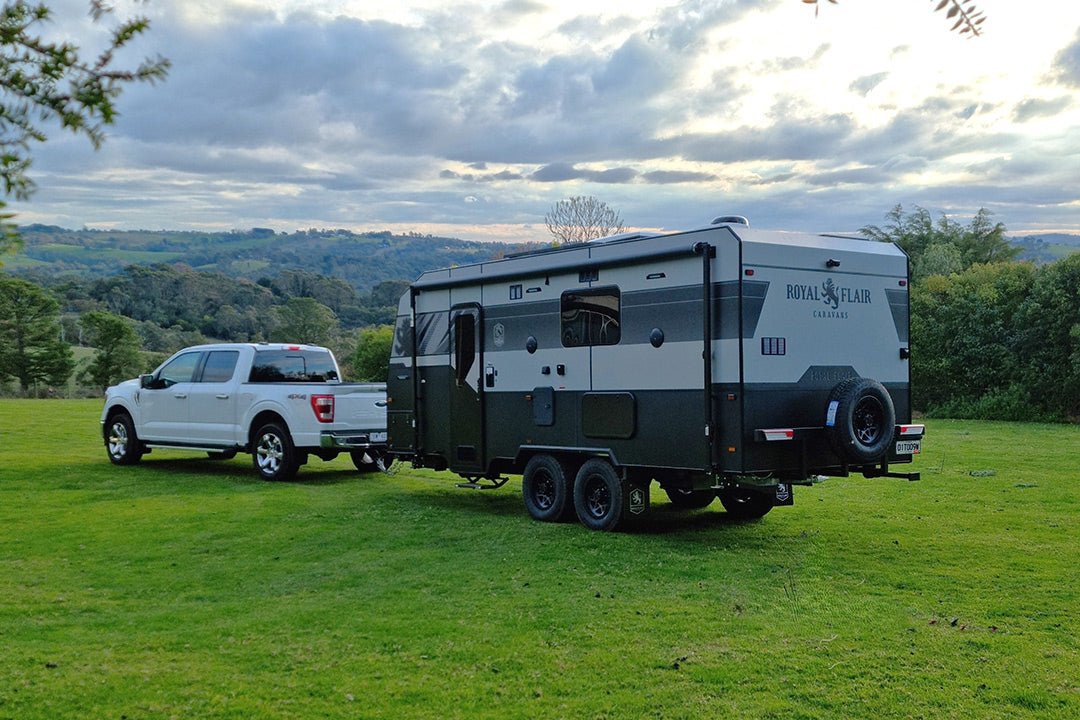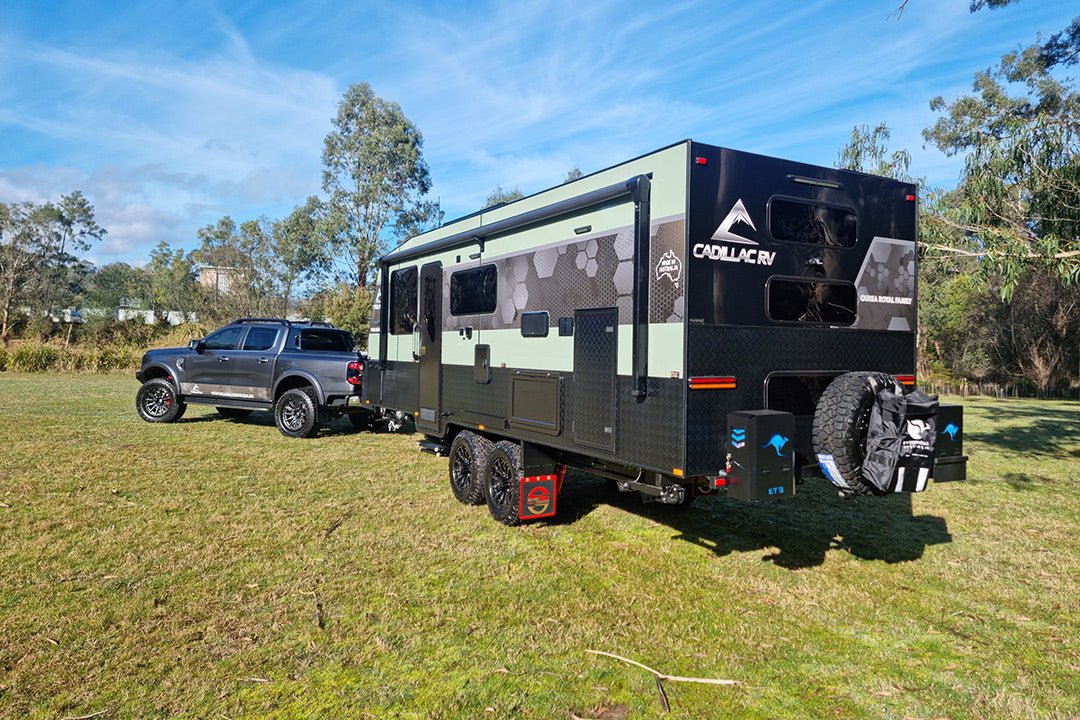Top 5 Summer Toys

I’ve hauled a kayak or a canoe on almost every road trip I’ve ever taken, along with an excess of fishing rods and snorkelling gear, balls, boogie boards and bicycles that weigh down our rig, hog space and, more often than not, get in the way.
Why? Because toys make life fun, get us exploring and, without them, we simply stand on the sidelines while other people enjoy themselves.
Travelling with outdoor toys can save you lots of hard-earned cash that you might otherwise spend on gear rentals, tours and trips, but the trick is to work out what you will use most and how to stow your gear so it won’t impact on everyday set-up routines. The best gear to make room for in your rig is whatever you love to use to get exploring — under the water, up-river or over the hill.
Whether you know how to use them yet or not, travelling with outdoor toys this summer will not only help you keep fit and keep entertainment costs down, but a fishing rod might also reel in a few free meals, and using a bike to explore will save your precious fuel supplies, too.
Here are my top five toys that can help make every adventure great.
A boat that floats
It might be a tinny, a SUP, a sit-on kayak, a big old Canadian canoe or a couple of boogie boards: just pack whatever boat your rig can manage because in this big, beach-fringed country of ours, there’s around 59,000km of coastline to explore.
I’ve never been one to sit on the sand, not knowing what lies across the bay or around the next bend in the river. That creates frustration beyond compare. Whether it’s paddling up Lawn Hill Creek or island-hopping off the Eyre Peninsula, having a boat — powered or not — opens up a whole new world of exploring.
If you're an angler, a tinny might be your vessel of choice, allowing you to travel greater distances, faster, and keeping you safe from crocs in far northern waterways. Because hauling a tinny can be complicated with a caravan in tow, folding boats with lightweight (possibly electric) motors are an option worth considering. They demand a bit of prep time to put together but are perfect for long stays in watery destinations.
Sit-on kayaks are an affordable, lightweight choice: robust and easy to strap down on top of caravans, too. The downside is that you will inevitably get wet paddling them, so while they are great for the tropics, wet suits are required for exploring chilly southern waters. Fibreglass or plastic sea kayaks with skirts solve the problem of staying dry in cold seas and get you further offshore, but their downside is their fragility, requiring more supportive roof racks.
Although it doesn’t track as well in the water, our inflatable kayak has room for three and, because it can be neatly folded up, takes up little space in our rig.
We did one big lap with a Canadian canoe strapped to the top of the LandCruiser, which, despite being heavy and bulky, was a great choice with lots of room for kids, picnicking and snorkelling gear, too.
As well as carrying some kind of boat, we invariably find space for our child’s boogie board, even on remote inland trips, because there's always a river, a gorge or a freshwater lake to kick around in.
Top Spots: Shark Bay (Denham, WA); Coffin Bay National Park (Eyre Peninsula, SA); Blackwood River (SW WA); Whitsunday Islands (Airlie Beach, Qld); Freycinet Peninsula (Tas); Lake Macquarie (Newcastle, NSW); Blacknose Point (Portland, Vic).
Fishing gear
Let me start by saying that I'm not a good angler. It's been a good decade since I caught anything remarkable, but I am blissfully content to rise early with a troop of keen beach anglers or to sit on any riverbank at sunset while they dangle a line and talk fishing.
It never seems to matter if we actually come back with dinner because, as any angler will tell you, it’s all about enjoying where angling can take you: to the edge
of some calm, turquoise sea, beside a raging, river or alongside a soothing rainforest stream.
In Australia, one of the best things about fishing is that you can do it just about anywhere. It can be (if you stay out of BCF) a pretty cheap pastime and regardless of your age or ability, anyone can do it. It’s a top choice for travellers, too, because fishing gear takes up barely any room and, if you strike it lucky, you might land yourself a hearty feed, too.
Top Spots: Weipa (Qld); Snowy River (NSW); Arthurs Lake (Tas); Karumba (FNQ); Streaky Bay (SA); Eighty Mile Beach (Great Northern Highway, WA); South Alligator River (Kakadu, NT); Ben Boyd National Park (Eden, NSW); Lake Tinaroo (Cairns, FNQ).
Freewheeling fun
Wheels — where would we be without them? Not a day goes by that my seven-year-old doesn’t get freewheeling on her bike, scooter or inline skates, simply because there’s speed involved and it’s a lot more fun than walking.
Bikes get us further, faster, and are a huge boost to our fitness after a long day sitting in car seats. They are quiet and non-polluting, and provide a top way to explore on short adventures away from camp. If you use them enough instead of starting up your vehicle, bikes can save a bit on fuel, too.
Another great thing about cycling is that you can invariably sneak up on unsuspecting wildlife, allowing you click off amazing photographs at very close range, because on a bike, you are far less threatening.
Packing bikes means investing in a rear door rack, and finding room for helmets and a bike pump, too, but it's well worth making the effort.
Top Spots: Forrest’s mountain biking trails (Otways, Vic); Kangaroo Island (SA); Simpsons Gap Bicycle Path (Alice Springs, NT); Munda Biddi Trail (SW WA); Bruny Island (Tas).
Under the Sea
The ocean covers more than 70 per cent of the earth’s surface, so while we think there’s an awful lot of land to explore, really, it’s just the beginning. What lies beyond the beach is wonderful and mysterious, but you can’t possibly hope to discover it without a compact, travel-friendly snorkelling set.
You can pick up a mask, snorkel and a pair of fins for as little as $50, and what makes snorkelling equipment worth packing is the variety of places you can use it, even away from the sea. I’ve snorkelled through the hot, limey waters of the NT’s Bitter Springs, finned through the channels of Ewens Ponds in SA, and explored countless inland rivers, dams and creeks in search of rainbow perch, eels, freshwater turtles and yabbies, too.
In fact, popping a mask and snorkel on a young child is a great way of coaxing them into safe, albeit slightly murky inland waterways to cool down, allowing them to see whatever it is that might be making them wary. Snorkelling off Queensland’s multi-coloured coral reefs is blissful with your own gear, allowing you to get in and out of the water all day long — no rental fees required. Add a wetsuit if your adventures take you into colder climes, though!
Top Spots: Ningaloo Reef (Cape Range National Park, WA); Fitzroy Island (Cairns, Qld); Bitter Springs (Mataranka, NT); Ewens Ponds (Mt Gambier, SA); Magnetic Island (Townsville, Qld); Dampier Archipelago (Karratha, WA); Tinderbox snorkelling
trail (Tas).
Get tech-savvy
Nothing tells a story like a really good photograph and there are so many great stories to tell when we travel. Whether you're happy capturing memories to share with family and friends on Facebook, or are running your own travel blog or Instagram feed, travelling photographers today need some techy toys.
Apart from the usual camera gear (SLR body, lens, filters and more), savvy snappers need a laptop, tablet or smart phone to get those awesome images online.
If the underwater world intrigues you, consider adding a waterproof housing to your kit and, although it’s not essential by any means, I can’t rave enough about the incredible imagery and perspective that drones create.
Owning a drone enables you to see high above your landscape and capture the big picture. The downside of drones, however, is that they crash — a lot — usually in places that are utterly inaccessible like really deep lakes, lofty treetops and the middle of the ocean — or at least that's my experience.
Flying a drone takes a bit of practise to perfect — and lots of guts — so it pays to start at the cheaper end of the scale or buy replacement insurance when you purchase your drone. If you do, school up on where you can and can’t fly them. It’s common sense really — never over crowds, public spaces or close to airports — and practise take-off and landing manoeuvres over clear, open ground.
Top Spots: Pentecost River Crossing (The Kimberley, WA); Tip of Cape York (FNQ); Bunda Cliffs (Nullarbor, SA); Red Centre Way (NT); Tasman Peninsula (Tas); Lucifer’s Thumb (Guy Fawkes National Park, NSW); Discovery Coastal Park (Vic).







